
Rice blast
| Primefact number | Edition | Published | Author |
|---|---|---|---|
| 1211 | Third | Jul 2017 | Plant Biosecurity and Product Integrity |
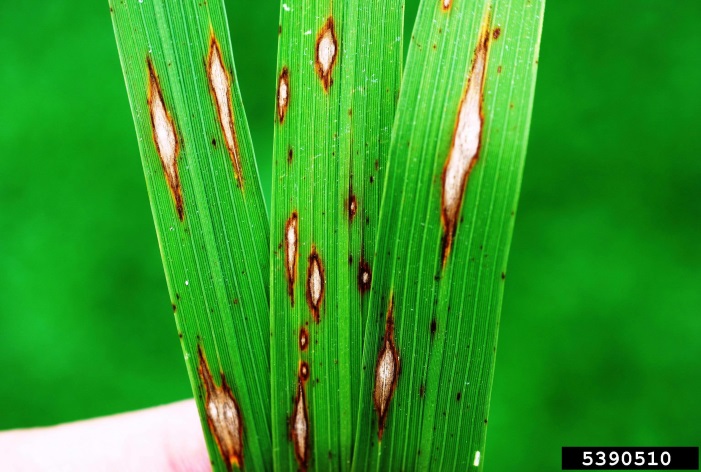
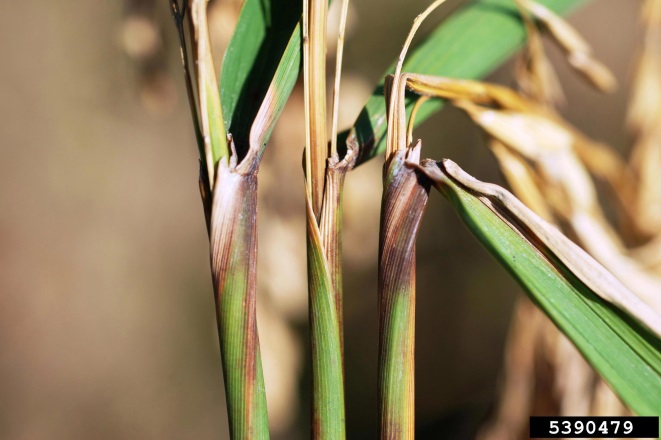
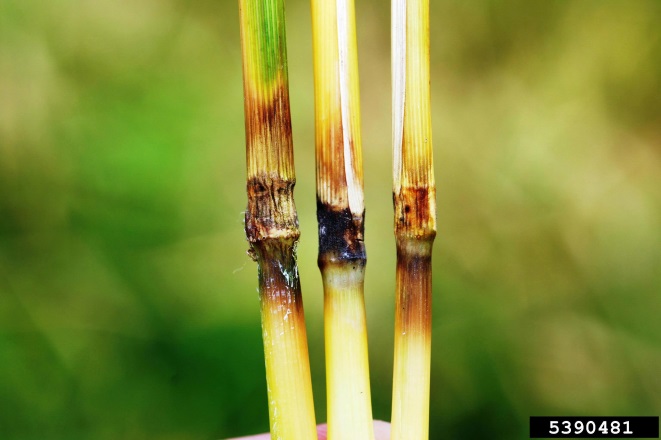
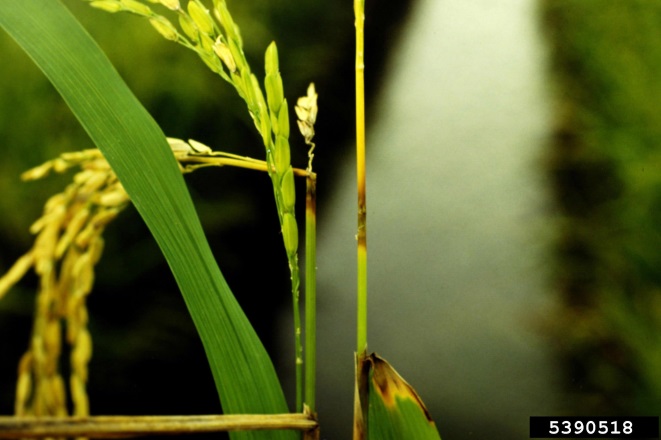
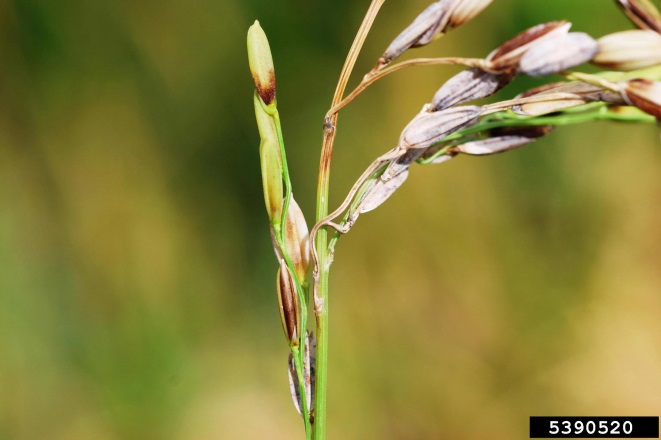
Rice Blast is considered the most important disease of rice worldwide.
Rice Blast is present in the tropical wetlands of northern Australia. In 2011 Rice Blast was found on a rice crop in northern Western Australia and has subsequently been detected in the Northern Territory and Queensland..
Rice Blast is a fungal disease caused by Magnaporthe oryzae (synonym Pyricularia oryzae).
Rice Blast is an exotic plant pest not present in the New South Wales Rice Biosecurity Zone PNG, 339.73 KB. This disease is a serious threat to Australia’s rice industry.
ALERT
The fungal pathogen Rice Blast was detected in rice crops near Lismore in northern NSW on 10 February 2024. This represents a southern expansion of the geographic range of Rice Blast in Australia. Affected premises are taking measures to limit the risk of spread. NSW DPIRD will work with the rice industry in the northern rivers to manage biosecurity around impacted crops. NSW DPIRD is also conducting surveillance and awareness within the Rice Biosecurity Zone of southern NSW to bolster the pest free status of this region.
Notifiable status
Rice Blast (Pyricularia oryzae) is a notifiable plant disease in NSW.
All notifiable plant pests and diseases must be reported within 1 working day. You can report notifiable plant pests and diseases by one of the following methods:
- Call the Exotic Plant Pest Hotline 1800 084 881
- Email biosecurity@dpi.nsw.gov.au with a clear photo and your contact details
- Complete an online form
A full list of notifiable plant pests and diseases can be found in Schedule 2 of the NSW Biosecurity Act 2015.
Symptoms
Rice Blast spores can infect plants at all growth stages, from seedlings to maturity. Symptoms develop on all above ground plant parts.
Lesions or spots are the most common symptom. Lesions are usually 1-1.5 cm long and 0.3-0.5 cm wide.
Crops under stress may exacerbate symptom development leading to rapid crop decline.
Leaf blast
Leaf lesions start as small white, grey or blue-tinged spots. Under moist conditions lesions enlarge quickly to either oval or diamond-shaped spots or to linear lesions with pointed ends, grey or white centres and narrow brown borders (Figure 1).
Severe infections may lead to death of leaves and whole plants. Leaf blast infections provide inoculum for panicles to become infected.
Collar rot
If a Rice Blast lesion is located at the junction of the leaf blade and leaf sheath the entire leaf can be killed. The leaf collar lesion discolours to brown and the leaf blade dies (Figure 2).
Node infection
Infected nodes appear black-brown and dry (Figure 3). An infection at the node often results in the stem breaking.
Neck rot
Neck rot may result in death of an entire panicle (Figure 4). Symptoms appear at the base of the panicle, starting at the node. The tissue turns brown and shrivels causing the stem to snap and lodge.
Panicle blast
Panicles which do not break or fall off as a result of neck rot may turn white to grey. Partially infected panicles may show grey-brown lesions among the panicle branches and on the stems of florets. Florets which do not fill turn grey (Figure 5).
Hosts
Rice (Oryza sativa) is the main host of rice blast, although the fungus can live on many grass and cereal species.
Disease cycle
The Rice Blast pathogen overwinters as fungal strands or spores on diseased rice stubble or seed or in living plants.
Infection in a new season may originate from the fungus overwintering on rice straw.
Rice Blast spores are transported by wind and water and can infect rice plants after landing on them. Many infection cycles may occur within a cropping season if weather conditions are favourable.
Actions to minimise risks
Put in place biosecurity best practice actions to prevent entry, establishment and spread of pests and disease:
- practice “Come clean, Go clean”
- ensure all staff and visitors are instructed in and adhere to your business management hygiene requirements
- source propagation material of a known high health status from reputable suppliers
- keep records
- minimise interaction with infected crops
- adhere to the restrictions in place for the Rice Biosecurity Zone in the Riverina, NSW (see below for further details)
How is Rice Blast Spread?
Rice Blast is spread via windborne spores, on infected plant material and grain and in water. Spores can also be transmitted on clothing and machinery if you are working an infected crop. Under dry conditions spores can survive for more than a year so transport of contaminated seed, souvenirs made of rice straw or contaminated equipment could introduce the disease into key production areas.
Control Options
Should Rice blast be detected in your crop there are a few control options available:
- Report the detection to NSW DPIRD as Rice blast is still a notifiable disease in NSW and disease confirmation is key to good management.
- Treatment with fungicide such as Azoxystrobin (an off label permit is available for treatment of rice crops in NSW – PER94571) will reduce the impact of the disease but will not eliminate all spores in crop residue and soil.
- Treatment with a knockdown spray to kill the crop followed by burning of the stubble to reduce inoculum load. It’s important to block drainage channels of the affected crop to dry it out to achieve this.
- Prevent infected grain entering into the mainstream supply chain as equipment, processing machinery and transport vehicles can become contaminated with spores.
- Where available, use resistant cultivars in areas of disease pressure to reduce impacts of yield loss.
Equipment and Vehicles
- Boots, equipment and vehicles should be thoroughly cleaned down with a pressure washer to remove mud and plant material then decontaminated if they have been in contact with an infected crop or grain.
- Boots and equipment can be decontaminated using a 2% bleach solution although, as this is corrosive, metal equipment will need to be rinsed with water afterwards.
Rice Biosecurity Zone
The Rice Biosecurity Zone exists over key rice production areas in the Riverina, NSW. It is vital that we prevent Rice Blast from becoming established within this zone through good biosecurity practices.
Restrictions in the Rice Biosecurity Zone include:
- do not move rice plants into the zone
- do not move any equipment used in rice production elsewhere in Australia into the zone
- do not move any coverings or containers that have been in contact with rice plants or rice production into the zone
Details on the Rice Biosecurity Zone (including maps) are listed in the Biosecurity Regulation 2017 (Biosecurity Act 2015)
Resources
Primefact Rice Blast PDF, 313.11 KB - print friendly version

